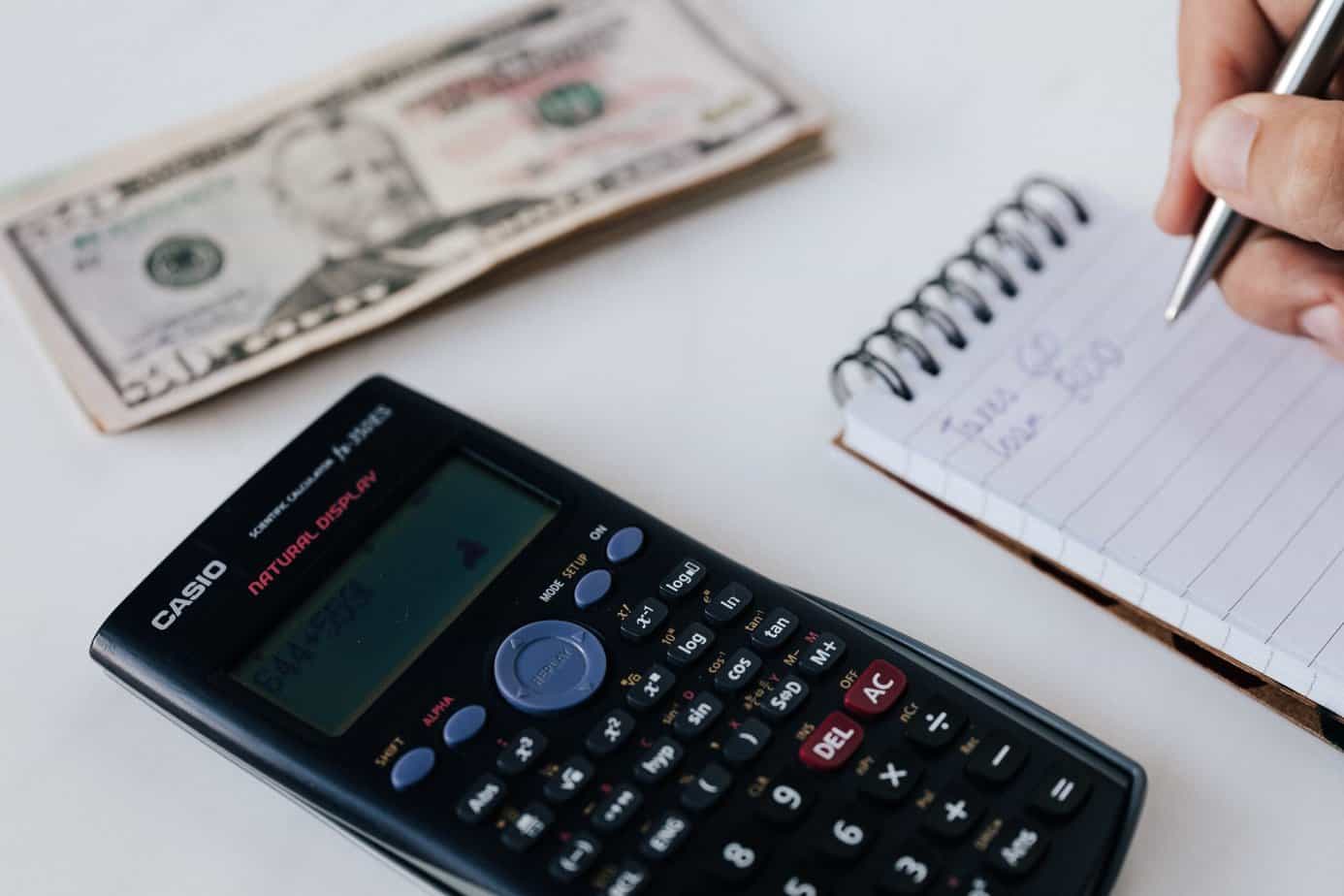The key to financial success includes having a budget—however, in my own personal experience, budgeting doesn’t always work. Here are some reasons why it doesn’t always work and what to do if that happens to you.
Why Is My Budget Not Working?
I asked myself this exact question, every month. For a year. You think I’m joking but I’m not. Every month I would start with a budget and end up going over budget. Every month I would ask myself, ‘Why is my budget not working?’ And every month came with the same answer: ‘I have no idea.’
Next I turned to experts. I checked out every finance book I could find at my local library. I searched the internet for posts and articles on finances. All my sources had the same advice—make a budget, calculate your income minus expenses, spend less than you earn, etc.
All the information said that a budget should work, so I reasoned that it was the budgeting method I was using that needed to be changed. So I tried each method of budgeting: the cash envelope method, the zero-based budget, the pay yourself first budget method, and the 50/30/20 budget method—but to no avail. It was in trying all these budgets that I realized something—budgets don’t teach you everything.
What A Budget Doesn’t Teach You
A budget consists of two components: saving and spending. A budget defines how much you need to spend and how much you need to save in order to reach your financial goals. A budget ultimately determines how much you can save toward your financial goals—but remember, a budget has two parts: saving and spending.
While a budget teaches you many things, it doesn’t focus enough on the spending aspect of a budget. And if you can’t spend within your limits, you will never be able to save.
So, you choose your budget method, and decide how much you want to save. In order to meet your savings goal, you need to determine how much you can spend. But spending doesn’t happen on these budgeting devices. It happens in real time—with real needs, real temptations, and really hard decisions. You make your money decisions as you scroll through Instagram, browse the aisles of your favorite store. You make these decisions in the fluorescent lights of a clearance sign, the maze of red tags marking a sale down the aisle of your favorite store, the lure of ‘Buy One, Get One,’ and deciding whether or not to click on the email notifying you of a flash sale. Budgeting happens before you enter the store, and before you consider a purchase. The real test happens after the budget is made, when you are tempted to spend money. Spending doesn’t happen in a ‘perfect world.’
The ‘Perfect World’ Factor
Creating your budget happens in a perfect world—a time when you are optimistic about meeting your upcoming monthly budget. You are confident that you can finally make a dent in that credit card you’ve been putting off. You won’t need to spend any more money on clothes, because you spent plenty on completing your wardrobe last month. You also spent way too little time in the kitchen and opted for fast food more than you should. You were going to make a conscious effort to eat the food you had on hand supplemented with fresh fruits and vegetables from the store. As you look, you are pleased with your budget. Everything balances and you anticipate being able to put a few hundred dollars toward paying off your credit card! On paper your budget looks great. But spending doesn’t happen on paper, and it definitely doesn’t happen because you are a real person with real wants and emotions. You are Human.
The Human Factor
The reality of fulfilling your budget is a lot harder than it appeears on paper. Midway through the month, you are making good progress toward meeting your budget. But then you notice your work suit is looking pretty shabby and you have a big presentation coming up. You reason that a suit is an investment; you deserve to splurge on a good suit with all the overtime you have done, so you get a replacement. Late nights in the office also mean fast food on the way home, but food is a necessity and you didn’t have time to cook.
A suit for work and food are justifiable needs. To have needs is to be human. But there are also wants—and wants are very human. There is that statement necklace that would look amazing with your new suit, and the purse that would instantly improve any outfit you own. Besides, a versatile purse is the last item you need for your closet to be complete.
We can justify almost any purchase, especially when the desire to obtain something is strong. Remember when I said that spending happens in real time, with real temptations and really hard decisions? Spending happens to human beings— human beings with real needs, temptations to spend, and really hard decisions to make.
In calculating the amount left to spend in our budget after income minus expenses, we forget to factor in being human—that we will soon get tired of the same clothes and same homemade ham sandwich for lunch. No matter how strong our will or how strict our budget, we will eventually cave and spend money. It’s not a matter of if, but when and how much we will spend.
The Spending Factor
Remember how I said that there are two components to a budget? Saving and spending. A budget doesn’t focus enough on the spending aspect—and if you can’t stay within your spending limits you won’t be able to save.
The urge to spend will overcome us all in some way or another, because the opportunities to spend are endless. We can’t check our email or look at our phones without a dozen advertisements bombarding us instantly. Technology brings an almost constant temptation to spend. The temptation to spend used to exist only in stores—steering clear of stores meant you could escape with your wallet and budget intact. But with online shopping and smart phones, spending money can happen any time and anywhere, in the time it takes to ‘add to cart.’
While we all spend money differently, we all spend. It is that spending and overspending we do that we need to focus on if we are going to stick to a budget. Until we get to the root of our overspending and understand why we spend, we cannot improve our finances.
But we are so unique—it is impossible to anticipate purchases, let alone categorize them to identify causation. Or is it? After struggling for years with my own budget and overspending, I decided to figure out where my money was going. Seeing what I spent my money on allowed me to trace back to the underlying cause of my spending. I began to see these same trends in the spending of others.
I was able to break down spending into six Spending Types that explain why we buy. I realized it is why you buy rather than what you buy that is crucial for change. Understanding the force behind spending is the only way to address it. When you identify why you are spending, you can identify the events that trigger your spending— and stop it before it happens.
Why Budgets Don’t Always Work And What To Do Instead
Budgets don’t always work, but that’s not to say that there isn’t a place for them. A budget shows your money where you want and need it to go. The money you have leftover is what is left to use. However, sometimes we view this leftover money negatively—as if the saving we ‘have to do’ keeps us from spending on what we want. In this view a budget will be seen as constraining. So what should we do instead?
Find Your ‘Likes’ and ‘Loves’
If we think that we ‘only have x amount to spend’ after expenses are paid, we are likely to feel restricted and limited which can cause us to spend more. Instead of looking at the limits of what you have to spend, change your perspective. A budget doesn’t keep you from buying things you like—it funnels your money to the things you love.
Oftentimes dreams are deemed unattainable—so instead of buying what we love we buy things we only like. Focus on what you really want. Take the money that would have been overspent on bargains and impulse buys and put it towards your dreams—things you LOVE! This perspective makes a budget seem practical; a way to achieve your dreams. Budgeting is the way to save for what you dream of—not just what you like. It’s finding what you really value, and putting your money towards those things.
Know Your Spending Type
Once you have a clear idea of what you really want with your money, you can make that the fuel for curbing overspending. Your Spending Type will tell you what triggers you to spend, and will help decrease overspending. That way, the money you don’t spend on impulse buys or bargain spending can be put toward your dreams- not just short-term desires. If you are interested uncovering your Spending Type, take the Spending Type Quiz now!



